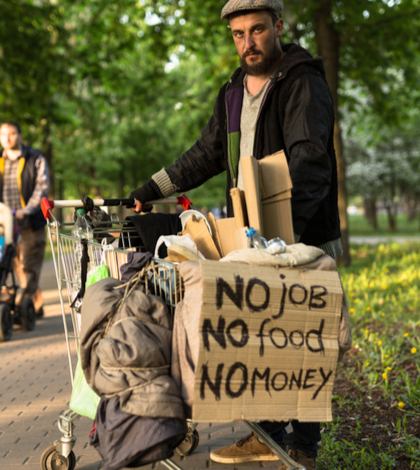Eric Gavin, coordinator of the Upland Community Restoration Team, is determined to rid the city of one of its biggest problems: homelessness.
“We’re going to try to eliminate all of it,” said Gavin, who runs a computer software business, Open Door Technology, out of his Upland home. “I think we can if we go after the problem hard enough. That might be [idealistic], but it’s what I believe. We have to try, and we will keep going for as long as we need to.
“Better to try and fail than not try at all.”
The restoration team, which is the city’s primary weapon against homelessness, got started after a conference in October 2016, during which community leaders discussed multiple ways to combat the problem.
Since then, the four-member volunteer group has had some success. A recent count determined there are 94 homeless people in city, down from 127 last year and 164 in 2016.
“There is no question that the work Eric and his team have done to reduce homelessness has helped make Upland a safer, healthier community,” Mayor Debbie Stone said in a recent statement.
Gavin spoke with IE Business Daily about how the restoration team is trying to get homeless people off the street, what causes the problem to begin with and why Upland has a bigger problem with homelessness than other Inland Empire cities.
Q: Why did you decide to take this job?
A: About two and a half years ago, I was doing well in my business and I started looking to give something back. I wanted to help the community, and I knew Upland had a big problem with homelessness. That’s when I heard about the city’s organization, the Upland Homeless Stakeholders Team, which was the forerunner to our organization.
Q: Was there anything in particular about homelessness that got your attention?
A: Yes, its economic impact. The unpaid hospital bills, all of the calls to the police and fire departments. I had no idea how much money it was costing the city.
Q: How much does it cost?
A: Probably more than $1 million a year, if you count unpaid hospital bills. The city used to have three community services officers devoted exclusively to homelessness, which cost about $500,000 a year, but they stopped doing that.
Q: What else did you learn?
A: That homelessness is a huge problem, not only in Upland but everywhere. Also that it’s very complicated, and there’s no one solution that will fix it. You need a comprehensive strategy, which what we didn’t have at the time, but we have now.
Q: What is that strategy?
A: We use the housing first approach, which means that the first thing you do when you identify someone as homeless is, you get them a place to live. You get a roof over their head, immediately. Then you try to fix whatever caused them to be homeless.
Q: Where do you place them?
A: In apartments, either in Upland or close by.
Q: Where do you get your funding?
A: For the chronically homeless the money comes from HUD. [The U.S. Department of Housing and Urban Development]. For the other category, which we call rapid rehousing, we have private donations, and we also use the homeless person’s money. You would be surprised how many homeless people have some income.
Q: How much do you get in donations?
A: We got $33,000 last year, which got 19 people off the street. We’re hoping to get $50,000 this year.
Q: How serious is Upland’s homeless problem? Is it worse than any other Inland Empire city of a similar size?
A: Two years ago, Upland had the third-largest homeless population in San Bernardino County. I would call that significant.
Q: Why do you think Upland’s homeless problem is more severe than most cities in the county?
A: I think it’s because Upland is built out, which is not true of a lot cities. It’s about 95 percent built out, which means it doesn’t have hiding places like other cities. A lot of cities have little pockets between them and their border cities, and people can hide there, but Upland doesn’t have that. Most homeless people hide out because they want to be left alone. Upland also has high housing costs, so it’s easier for people to lose their homes there than it is in other places.
Q: So when someone becomes homeless they don’t leave their city?
A: No, they don’t. They stay in the community they’re familiar with. They go live in the riverbed, or next to the freeway, someplace like that.
Q: What are the main causes of homelessness?
A: The cliche answer is drug abuse, alcoholism and mental illness, and certainly those are factors, but I don’t believe they’re the main cause. I believe the main cause is that housing is so expensive. We don’t have enough housing that people can afford.
Q: How hard is it to get accurate data regarding homeless people?
A: It’s very difficult. They’re hard to find because they don’t have addresses, and when you do find them they aren’t always cooperative. All they want to tell you is they’re from Upland.
 IE Business Daily Business news for the Inland Empire.
IE Business Daily Business news for the Inland Empire.


